Those visiting Costa Rica often have one animal at the top of their wish list. Sloths! These furry, slow-moving creatures have captured the hearts of millions. With their kind eyes and smile-shaped fur pattern, who wouldn’t love them? But be careful, sloths have become big business in some parts of Costa Rica. In this article, we’ll give some background on sloth tours in Costa Rica so you can have an ethical encounter to remember.
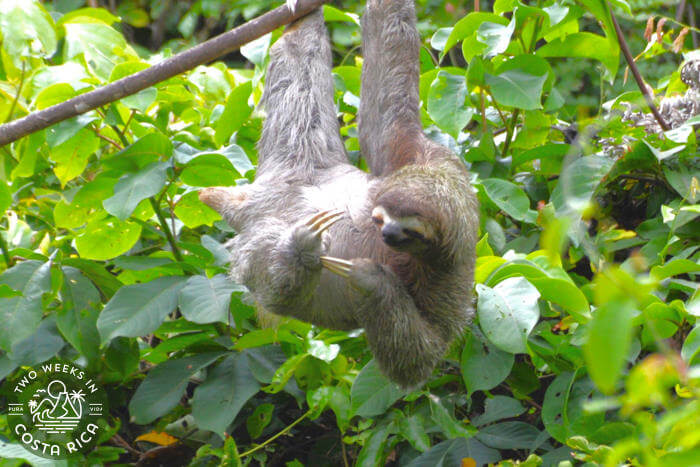
What’s Happening with Sloths?
Costa Rica has many healthy populations of sloths living in the wild. However, with their popularity, some people are taking advantage for their own financial gain. Here are a few examples to be aware of.
Moving Sloths
Sloths generally live in rainforests, cloud forests, and humid tropical forests. This means that some parts of the country, like Guanacaste on the northern Pacific coast, are not suitable for them. Sloths just don’t live in tropical dry forests. But sloth tours are still popping up there.
This is because people have taken sloths from their natural environment and moved them to these new areas. Since they don’t have the correct food and habitat, the sloths often become malnourished and stressed. If kept there, they will die.
If taking a sloth tour from Guanacaste, make sure you are going on a long day trip inland to where sloths live naturally.

Grouping Sloths Together
Even in areas where wild sloths are common like in La Fortuna/Arenal, there’s a lot of competition for sloth tours.
Some businesses have reportedly captured and released many sloths together on small private properties. This makes it so that you are guaranteed to see one during a visit.
Sloth sightings should never be guaranteed.
These animals are very territorial and mostly solitary. Having many together causes fighting between the sloths and a lot of stress. If you see a few sloths on a property, that may be normal. But a half-dozen or more in a small geographic area could mean that something suspicious is going on.
Close Encounters
People are getting too close to sloths. Unscrupulous guides allow people to take selfies, feed, or even hold a sloth. This is illegal and harmful to the animals.
In 2019, Costa Rica’s tourism sector launched a campaign to stop animal selfies. It cited a World Animal Protection International survey that listed Costa Rica as the 7th worst location for inappropriate wildlife photos.
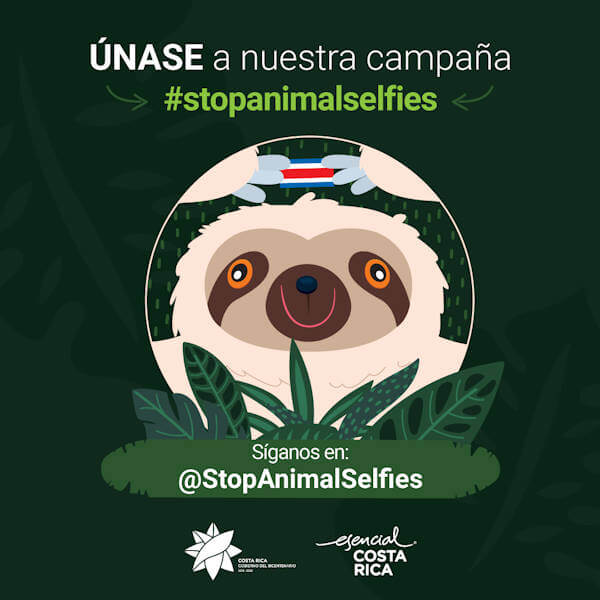
We all want good photos to remember but make sure to take them from a distance. Also, don’t use a flash or make too much noise when photographing a sloth. Sloths live quiet lives and require their own space to stay healthy.
How to See Sloths in Costa Rica Ethically
There are two main ways you can safely see sloths on your vacation to Costa Rica: on a nature walk at a national park or reserve or at a wildlife rehabilitation center.
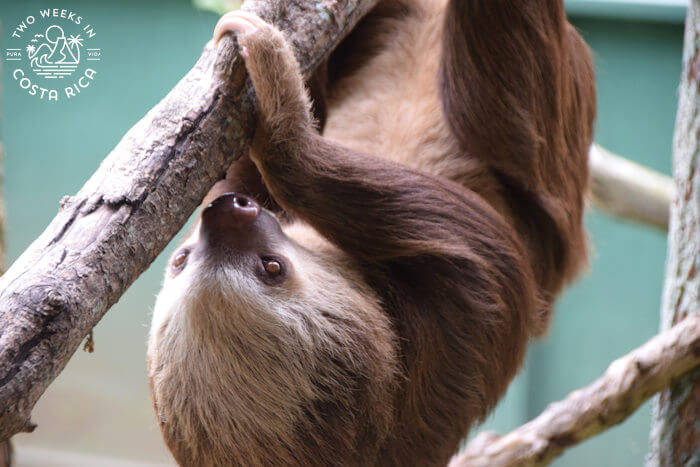
Seeing Sloths in the Wild
Costa Rica has two species of sloth, the two-toed sloth and the three-toed sloth. Their habitats overlap but they are completely different from one another.
The best way to encounter a sloth in the wild is to hire a certified naturalist guide. These guides are trained to know where sloths hang out. They can teach you a lot about the species you are seeing.
Guides also have powerful scopes that will let you see a sloth close up. Not only that, but they’re often able to take photos through the scope with your phone so you can have an up-close image without bothering the animal.

Where to See Sloths in Costa Rica
Some good destinations to see sloths include Costa Rica’s central and southern Pacific coast (Manuel Antonio, Dominical, Uvita, and the Osa Peninsula), the Caribbean coast (Tortuguero, Cahuita, Puerto Viejo de Talamanca, and Manzanillo), and the north-central region (La Fortuna, Bijagua/Rio Celeste, Sarapiqui, and Monteverde).
This isn’t an all-inclusive list but a good start.
In La Fortuna/Arenal, there’s a nice sloth and bird tour we’ve taken with a guide to a nature reserve. We saw a few sloths living in the rainforest around the property. This is a good option for an ethical sloth tour.
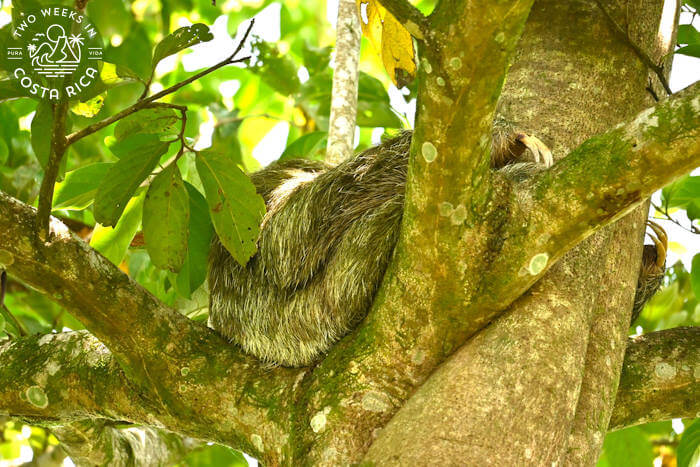
Visiting a Wildlife Rehab Center
Another great way to see sloths is at a wildlife rehabilitation center.
There are several centers around Costa Rica that do important work. These facilities bring in injured or confiscated animals and try to release them when healed.
Sometimes sloths must remain in captivity because of the extent of their injury or stress they have experienced. These animals then act as ambassadors for spreading knowledge about sloths.
Here area a few wildlife rehab centers that we have enjoyed visiting.
Toucan Rescue Ranch
Located near San Jose, this facility offers a unique tour where you can have coffee with a sloth. Staying a safe distance, you’ll observe the sloth while it does its daily enrichment activities. Learn more in our article, Toucan Rescue Ranch: Wildlife and Sloth Tour.
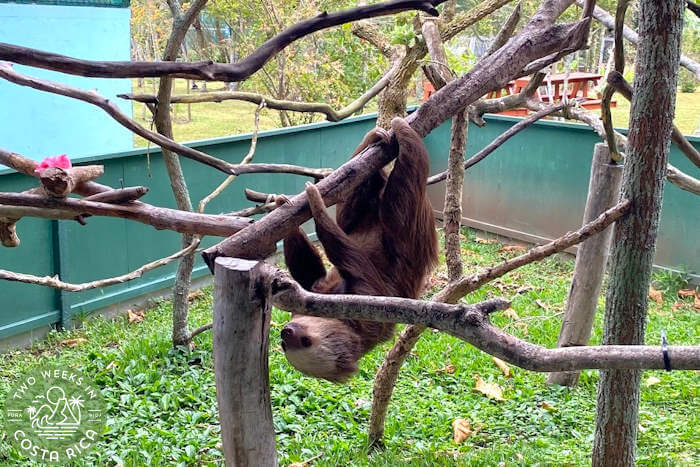
Kids Saving the Rainforest
On Costa Rica’s central Pacific coast near Manuel Antonio is Kids Saving the Rainforest.
For decades this group has been helping local wildlife, including sloths. At their facility you can meet a couple of the resident sloths and hear their story. Learn more through our article, Kids Saving the Rainforest.
Proyecto Asis
Located near La Fortuna/Arenal, Proyecto Asis has been taking in animals in need for over 20 years. They are also an important watchful eye for what has been happening to sloths in recent years. Their wildlife center tour has an optional volunteering element as well.
Jaguar Rescue Center
Located along the southern Caribbean coast, this rescue center takes in many sloths that have, unfortunately, been electrocuted, attacked by dogs, or hit by cars. Some will never leave the center but do become important educational ambassadors. Read more here: Jaguar Rescue Center Wildlife Tour in Puerto Viejo.

Conclusion
Seeing a sloth on your trip to Costa Rica can be a highlight. But don’t forget, these celebrity animals are sensitive and real. If you take a sloth tour, make sure the company is operating in an ethical way. Don’t be afraid to ask questions and express your concerns. This will make everyone realize that authentic experiences are essential and what we need to keep the sloth population healthy and smiling.
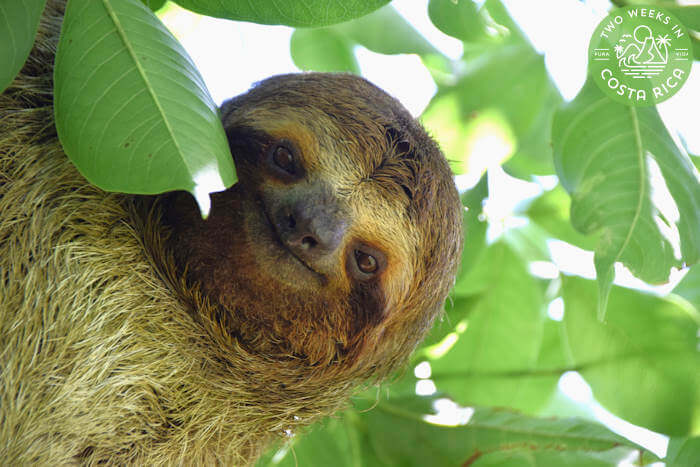
Have a question about sloth tours in Costa Rica? Ask us below.
Looking for more information to plan your trip to Costa Rica? Check out these posts:
A Sloth and Bird Tour in La Fortuna: This guided tour is a good option for seeing sloths in the wild in an ethical way.
Bijagua: A Gateway to the Rio Celeste – This small town is one of the best places in Costa Rica to see sloths.
Sustainability: Check out our Sustainability section for articles on sustainable hotels and activities.
